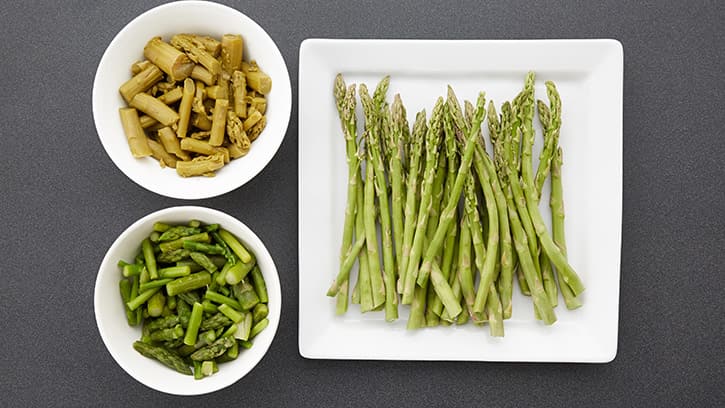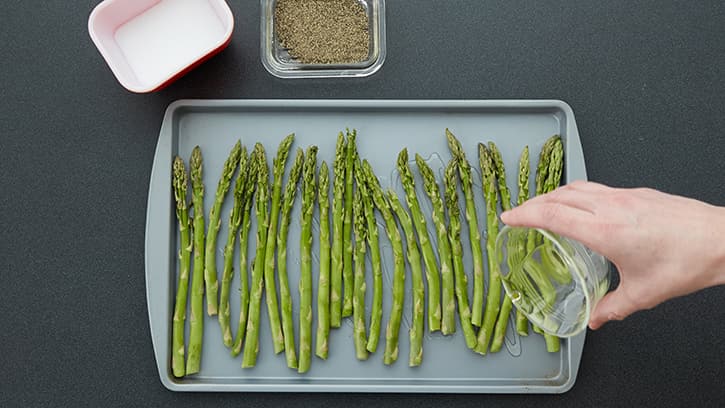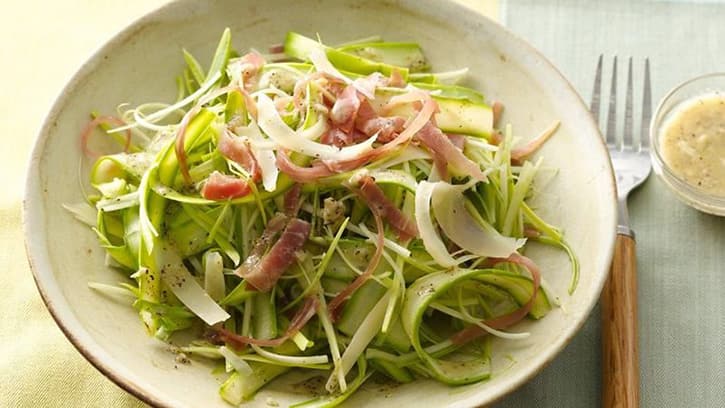(function() {
document.addEventListener('DOMContentLoaded', function() {
var componentMetadata = JSON.parse('\x7b\x22componentName\x22\x3a\x22ChannelLinks_8918a218-1030-4c2b-87de-605f1d7de656\x22,\x22deferOptions\x22\x3a\x7b\x22deferComponent\x22\x3afalse,\x22deferType\x22\x3a\x22None\x22,\x22deferId\x22\x3a\x22r6b5f681f28a244ca802f0d781bddbb45\x22,\x22deferredContainerId\x22\x3a\x22\x2fchannelLinks\x22,\x22deferredContainerView\x22\x3anull\x7d,\x22viewName\x22\x3a\x22ChannelLinks\x22\x7d');
var configuration = {};
var moduleName = 'channelLinks';
var isVueModule = true;
GeneralMills.PandoSites.RegisterControlInstance(moduleName, configuration, componentMetadata, isVueModule)
});
})();
(function() {
document.addEventListener('DOMContentLoaded', function() {
var componentMetadata = JSON.parse('\x7b\x22componentName\x22\x3a\x22ActionToolbar_59e5fa31-dc57-46ea-93d1-265650a760f0\x22,\x22deferOptions\x22\x3a\x7b\x22deferComponent\x22\x3atrue,\x22deferType\x22\x3a\x22OnDemand\x22,\x22deferId\x22\x3a\x22rde2ed08820ab4079baf40915811e09a4\x22,\x22deferredContainerId\x22\x3a\x22\x2ffloatingActionToolbar\x2ffloatingActionToolbar_interop\x22,\x22deferredContainerView\x22\x3a\x22InteropDeferWrapper\x22\x7d,\x22viewName\x22\x3a\x22ActionToolbar\x22\x7d');
var configuration = {"contentId":"b8fd21a5-a2a7-42b1-ad5f-51ba9a267c0b","toolbarSettings":{"id":"59e5fa31-dc57-46ea-93d1-265650a760f0","regAction":"FAVORITE","eSourceCode":11275,"namePassedToEvents":"ArticleStandardLongFormToolbar","buttons":[{"addFavoriteErrorMessage":"Sorry, something went wrong. Please save again.","removeFavoriteErrorMessage":"Error occurred while removing from favorites","regAction":"FAVORITE","eSourceCode":11275,"isCurrentUserAnonymous":false,"isFavoriteItem":false,"id":"16a29701-2b75-4d9a-aa9c-860376da50d7","allowedForAnonymousUsers":false,"type":"Favorite","displayName":"Save","namePassedToEvents":"Favorite","cssClassName":"atButtonFavorite","privacyOptOutMessage":"\u003cdiv class=\u0027privacyMessage\u0027\u003e\n\u003ch3\u003eThis feature is not available with your current cookie settings.\u003c/h3\u003e\n\u003cp\u003eYou can \u003ca href=\u0027#\u0027 data-show-preference-center=\u00271\u0027\u003eupdate your privacy settings\u003c/a\u003e to enable this content. Please enable “Functional Cookies” to use this feature.\u003c/p\u003e\n\u003c/div\u003e","showPrivacyOptOutMessage":false},{"providerName":"pinterest","providerNamePassedToEvents":"Pinterest","shareUrlFormat":"//pinterest.com/pin/create/link/?url={0}","id":"c18cf08e-e436-4cd0-a180-1bafb15369a6","allowedForAnonymousUsers":true,"type":"Social","displayName":"Pinterest","namePassedToEvents":"Pinterest","cssClassName":"atButtonPinterest","privacyOptOutMessage":"\u003cdiv class=\u0027privacyMessage\u0027\u003e\n\u003ch3\u003eThis feature is not available with your current cookie settings.\u003c/h3\u003e\n\u003cp\u003eYou can \u003ca href=\u0027#\u0027 data-show-preference-center=\u00271\u0027\u003eupdate your privacy settings\u003c/a\u003e to enable this content. Please enable “Functional Cookies” to use this feature.\u003c/p\u003e\n\u003c/div\u003e","showPrivacyOptOutMessage":false},{"templateId":"13bdd311-4300-4fb8-9d78-9cbaf98f5578","dialogHeading":"Email Article","emailCode":"BC_ContentEmail","dialogSettings":{"cancelButtonText":"Cancel","copyToSenderLabel":"Send a Copy to Myself","emailAddressesLabel":"* Email Address(es)","emailInstructionText":"Separate email addresses with commas","fromText":"From:","privacyPolicyText":"\u003cp\u003e\u0026copy;2024 General Mills, Inc. All Rights Reserved. This information will only be used to send an email to your friend(s) and will not be saved. Please read our \u003ca rel=\u0022noopener noreferrer\u0022 rel=\u0022noopener noreferrer\u0022 href=\u0022http://www.generalmills.com/company/privacy-policies/privacy-policy-us\u0022 target=\u0022_blank\u0022 shape=\u0022rect\u0022\u003ePrivacy Policy\u003c/a\u003e.\u003c/p\u003e","requiredFieldText":"* Required","sendButtonText":"Send","senderEmailAddressLabel":"* Your Email Address","senderFirstNameLabel":"* Your First Name","sendToText":"Send To:"},"id":"be9422a3-85a8-4c31-86f5-e171255bb89d","allowedForAnonymousUsers":true,"type":"Email","displayName":"Email","namePassedToEvents":"Email","cssClassName":"atButtonEmail","privacyOptOutMessage":"\u003cdiv class=\u0027privacyMessage\u0027\u003e\n\u003ch3\u003eThis feature is not available with your current cookie settings.\u003c/h3\u003e\n\u003cp\u003eYou can \u003ca href=\u0027#\u0027 data-show-preference-center=\u00271\u0027\u003eupdate your privacy settings\u003c/a\u003e to enable this content. Please enable “Functional Cookies” to use this feature.\u003c/p\u003e\n\u003c/div\u003e","showPrivacyOptOutMessage":false},{"providerName":"facebook","providerNamePassedToEvents":"Facebook","shareUrlFormat":"//facebook.com/sharer/sharer.php?u={0}","id":"6c3f442d-6ffe-460f-8360-b02b122d326c","allowedForAnonymousUsers":true,"type":"Social","displayName":"Facebook","namePassedToEvents":"Facebook","cssClassName":"atButtonFacebook","privacyOptOutMessage":"\u003cdiv class=\u0027privacyMessage\u0027\u003e\n\u003ch3\u003eThis feature is not available with your current cookie settings.\u003c/h3\u003e\n\u003cp\u003eYou can \u003ca href=\u0027#\u0027 data-show-preference-center=\u00271\u0027\u003eupdate your privacy settings\u003c/a\u003e to enable this content. Please enable “Functional Cookies” to use this feature.\u003c/p\u003e\n\u003c/div\u003e","showPrivacyOptOutMessage":false},{"layoutParameter":"p%3d1","id":"de022929-4416-4bc9-ab3c-ae5711d562bf","allowedForAnonymousUsers":true,"type":"Print","displayName":"Print","namePassedToEvents":"Print","cssClassName":"atButtonPrint","privacyOptOutMessage":"\u003cdiv class=\u0027privacyMessage\u0027\u003e\n\u003ch3\u003eThis feature is not available with your current cookie settings.\u003c/h3\u003e\n\u003cp\u003eYou can \u003ca href=\u0027#\u0027 data-show-preference-center=\u00271\u0027\u003eupdate your privacy settings\u003c/a\u003e to enable this content. Please enable “Functional Cookies” to use this feature.\u003c/p\u003e\n\u003c/div\u003e","showPrivacyOptOutMessage":false}],"isSticky":true},"userSettings":{"isCurrentUserAnonymous":true,"isFavoriteItem":false},"pageAttributes":{"url":"https%3a%2f%2fwww.bettycrocker.com%2fhow-to%2ftipslibrary%2fcooking-tips%2fHow-to-Cook-Asparagus","contentId":"b8fd21a5-a2a7-42b1-ad5f-51ba9a267c0b"},"recaptchaPublicKey":"6LfU_icUAAAAALSqSjRg5hqZwbPr1b8k-_80a_S_"};
var moduleName = 'actionToolbar';
var isVueModule = true;
GeneralMills.PandoSites.RegisterControlInstance(moduleName, configuration, componentMetadata, isVueModule)
});
})();
Introduction
Along with peas, radishes and leeks, asparagus is a favorite spring veggie. While it’s in season from March to June, it’s available year-round—making it an easy-to-prepare, go-to veggie that you can serve with just about everything!
Asparagus is a unique plant that sprouts edible shoots, or stems, that develop feathery “leaves” on top of each shoot. It’s harvested while young, before the buds open and the shoots take on a “woody” texture and flavor. The use of asparagus shoots dates back to Egyptian and Roman times, when asparagus was cultivated for its flavor and for medicinal use. (It’s widely known as a diuretic.)
Asparagus is usually green, but white asparagus—which results from protecting the plant from photosynthesis while the shoots are growing—is common in many parts of Europe. White asparagus is sweeter and more tender than green, and is frequently used in German, French and Dutch dishes.
The high nutritional content and low calorie count of asparagus (about 40 calories per 1-cup serving), make it a great choice for just about any meal. In each 1-cup serving, you’ll find your complete daily recommended intake of vitamin K, as well as a healthy dose of minerals like folate, copper and selenium. Asparagus has also been lauded for its antioxidant and digestive support benefits.
How to Choose Asparagus

Many people opt to buy asparagus fresh, but it’s also available canned, frozen or even pickled. If you’re using it fresh, look for straight, firm spears that have almost light purple tips. While some people prefer thinner stalks, the thickness of the stalk doesn’t usually affect flavor. You may select thin or thick spears based on what you’re making—for example, if you’re baking asparagus into a casserole that will bake for a long time, you may want to select thicker stalks so they don’t dry out and shrivel up in the oven.
Avoid stalks that are shriveled or that have dry, extremely hard or white ends, as this is a telltale sign that the veggie will be tough and dry. Fresh asparagus will keep in the fridge for about 3 to 4 days. One method to keep it fresh is to put the stalk upright in a large glass containing an inch or two of cold water, and loosely cover the stalks with a plastic produce bag. A bunch should serve 2-4 people, depending on whether it’s used as an entrée or side dish.
Throw asparagus out if it gets shriveled, smells fishy or if the feathery top of the stalks seems slimy. Leftover cooked asparagus will last a couple days in the fridge although, like broccoli, it can get a little smelly when reheated! You may want to store asparagus separate from other leftovers for that reason.
How to Prepare Asparagus
Wash asparagus thoroughly immediately before prepping it. To trim the ends, simply snap them off (this will work if the asparagus is nice and firm), or use a knife or kitchen shears to cut about 1 to 1 1/2 inch from the ends. Eating Richly has some great tips for using up the ends of asparagus, including a creamy soup made with homemade broth.
There’s no need to peel asparagus, but you may want to if the stalk is extremely tapered and you’d like to even it out, or if the peel is excessively thick or tough. It’s totally up to you!
Ways to Cook Asparagus

Asparagus has a delicate flavor that is best when lightly cooked. It’s important to not overcook this veggie, as it may end up dried out, rubbery or soggy. Here are some of our favorite ways to make it:
- Roasting: Lay trimmed stems on a sheet pan, drizzle with a little olive oil, salt and pepper, and roast at 425°F for 12-15 minutes, or until tender and just starting to brown. Garnish with Parmesan cheese, nuts, balsamic vinegar or whatever you like!
- Blanching: Boil water in a wide frying pan or stock pot, place asparagus in the boiling water and cook for 2 minutes or until bright green. Remove from the water and immediately run under cold water, then serve with your favorite toppings or sauce.
- Steaming: Cut the asparagus stalks to fit into your steamer basket, and steam as you would any other veggie—until it’s bright green and tender, but still has some crispness. You can also steam asparagus in the microwave by cooking on High for 3 minutes in a microwave-safe dish with a little liquid and a few dollops of butter.
- Sautéing: Heat a little olive oil in a large skillet over medium heat. Cut asparagus into pieces that will fit nicely in your pan, then sauté with a little salt and pepper until it’s crisp-tender, about 5 minutes.
- Grilling: Fresh asparagus stems are so easy to make because they can go right on the grill grates! Just make sure to use thicker stalks and turn them carefully—you can also use a grill basket for easier preparation.
It’s perfectly safe to eat asparagus raw, but it can be tough to chew that way. The American Heart Association recommends cooking asparagus, as the antioxidant benefits actually increase when the vegetable is cooked.
How to Serve Asparagus

Some asparagus lovers maintain that it’s best when kept simple: topped with some olive oil or butter, salt and pepper, and maybe a sprinkling of basil, balsamic vinegar or Parmesan cheese. There’s no shortage of ways to serve this versatile veggie though!
- Top it with a hollandaise, béarnaise or another creamy sauce. Cheese sauce is a quick way to do this.
- Mix blanched asparagus into cold pasta salads, or add roasted asparagus to hot pasta. Chop, shave or grate raw or blanched asparagus stalks and add them to a spring or summer salad.
- Asparagus is a classic and simple party appetizer—wrap roasted, steamed or blanched stems in thinly sliced ham, bacon or prosciutto, then drizzle with olive oil, salt and pepper, and whatever spices you like.
- Add chopped asparagus into any egg bake, quiche, frittata or casserole where you’d normally include veggies. Easter is a great time to do this!
- Toss asparagus into stir-fries—you’ll want to add it after hardier veggies like carrots so it doesn’t get overcooked.
- Top pizzas, flatbreads and tarts with asparagus and bake as normal.
- Asparagus makes a lovely base to blend into cream soups (similar to broccoli or cauliflower), and can be chopped and added to veggie or ham-based soups. Just make sure to add it near the end of cooking time so it doesn’t get overdone.
To get you started, here are some of our favorite asparagus recipes!
Ready to learn how to cook more vegetables? Betty can teach you how to bake a potato, how to cook spaghetti squash and more.
(function() {
document.addEventListener('DOMContentLoaded', function() {
var componentMetadata = JSON.parse('\x7b\x22componentName\x22\x3a\x22NewsletterCTA_b9911a56-3a0d-4b1c-8521-df6c10ce048a\x22,\x22deferOptions\x22\x3a\x7b\x22deferComponent\x22\x3atrue,\x22deferType\x22\x3a\x22OnDemand\x22,\x22deferId\x22\x3a\x22r0a2d6a87a8374095810933b40032e581\x22,\x22deferredContainerId\x22\x3a\x22\x2fprimaryColumn\x2finteropInlineNewsletterCta\x22,\x22deferredContainerView\x22\x3a\x22InteropDeferWrapper\x22\x7d,\x22viewName\x22\x3a\x22NewsletterCTA\x22\x7d');
var configuration = {"unsubscribedNewsletters":[{"listId":"1e34a555-89d1-45f0-8f07-b3ae6b01c03c","thumbnailImageUrl":"/-/media/GMI/Core-Sites/BC/Images/Shared/myaccount/newsletters/BC_Thumb157x157.png?sc_lang=en","previewUrl":"https://morpheus3.idpk.net/email_sends/9111/preview","name":"Betty\u0027s Email","isPromo":false}],"settings":{"anonymousCopy":"Ready to Be Inspired?","anonymousDescriptionCopy":"We know you’ll love our daily tips, trends and tasty recipes sent right to your inbox.","anonymousThankYouCopy":"\u003cp\u003eThanks! Your first email is on its way.\u003c/p\u003e\n","anonymousThankYouDescriptionCopy":"\u003cp\u003e\u003cspan\u003eNow that you\u0026rsquo;re signed up, create an account on BettyCrocker.com to save your favorite recipes, learn more about special promotions and get inspired through Betty\u0026rsquo;s expert tips.\u003c/span\u003e\u003c/p\u003e","anonymousButtonText":"Sign up now","anonymousEmailInvalidErrorText":"Please enter a valid email address.","anonymousSubscribeErrorText":"We encountered an error while signing you up. Please try again.","anonymousEmailAddressPlaceholderText":"Enter your email address","anonymousEmailAddressLabel":"Email Address","anonymousLegalCopy":"By signing up, you accept our\u0026nbsp;\u003ca rel=\u0022noopener noreferrer\u0022 href=\u0022https://www.generalmills.com/privacy-security/us-english-privacy-policy\u0022 target=\u0022_blank\u0022\u003e\u003cspan style=\u0022text-decoration: underline;\u0022\u003ePrivacy Policy\u003c/span\u003e\u003c/a\u003e\u0026nbsp;and agree that your information may be used across our\u0026nbsp;\u003ca rel=\u0022noopener noreferrer\u0022 href=\u0022https://www.generalmills.com/food-we-make/brands\u0022 target=\u0022_blank\u0022\u003e\u003cspan style=\u0022text-decoration: underline;\u0022\u003efamily of brands\u003c/span\u003e.\u003c/a\u003e","requiredFieldText":"","standardSmallImageUrl":"/-/media/GMI/Core-Sites/BC/Images/BC/seasonal/2021_Christmas/ncta_bg.png","standardLargeImageUrl":"/-/media/GMI/Core-Sites/BC/Images/BC/seasonal/2021_Christmas/ncta_bg.png","backgroundColor":"#333333","accentColor":"","registrationUrl":"/register/reg-fp?RegAction=SUBSCRIBERUPGRADE\u0026esrc=11275\u0026returnUrl=%2fhow-to%2ftipslibrary%2fcooking-tips%2fHow-to-Cook-Asparagus","registrationLinkText":"Join free!","enableExpandedFields":false,"hideForSessionCookieExpiration":0,"ctaType":"StandardAnonymous","location":"Inline","userState":"Anonymous","sourceCodeOverride":0}};
var moduleName = 'newsletterCta';
var isVueModule = true;
GeneralMills.PandoSites.RegisterControlInstance(moduleName, configuration, componentMetadata, isVueModule)
});
})();
(function() {
document.addEventListener('DOMContentLoaded', function() {
var componentMetadata = JSON.parse('\x7b\x22componentName\x22\x3a\x22ConsumerGeneratedContent_b8fd21a5-a2a7-42b1-ad5f-51ba9a267c0b\x22,\x22deferOptions\x22\x3a\x7b\x22deferComponent\x22\x3atrue,\x22deferType\x22\x3a\x22OnDemand\x22,\x22deferId\x22\x3a\x22r94aa78b2726243c1af6e9e45ffe7cd55\x22,\x22deferredContainerId\x22\x3a\x22\x2fratingReview\x2finteropRatingReview\x22,\x22deferredContainerView\x22\x3a\x22InteropDeferWrapper\x22\x7d,\x22viewName\x22\x3a\x22ConsumerGeneratedContent\x22\x7d');
var configuration = {"loaderScript":"https://apps.bazaarvoice.com/deployments/bettycrocker/main_site/production/en_US/bv.js","type":"QuestionAndAnswer","language":"en","includeRatings":false};
var moduleName = 'consumerGeneratedContent';
var isVueModule = true;
GeneralMills.PandoSites.RegisterControlInstance(moduleName, configuration, componentMetadata, isVueModule)
});
})();